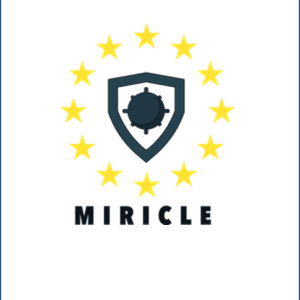 \
&
Contact us
\
&
Contact us
 \
&
Contact us
\
&
Contact us
Minerals, metals and advanced materials are key enablers of the green and digital transition. Raw materials are critical to preserving the global competitiveness of the EU’s most strategic economic sectors. They are fundamental for the EU to develop its strategic autonomy and to re-industrialise key European ecosystems.
Today, only a fraction of the most relevant raw materials is produced in Europe. This can be changed through a circular economy approach, through innovation in recycling, substitution, processing, mining, and exploration. It is the objective of EIT RawMaterials to secure a sustainable raw materials supply by driving innovation, education and entrepreneurship across European industrial ecosystems.
The general objective of this innovation community is to enable sustainable competitiveness of the European minerals, metals and materials sector along the entire value chain by driving innovation, education and entrepreneurship. This is mirrored in the fact that the members and partners involved are active along the entire value chain so from exploration, mining and mineral processing to substitution, recycling and circular economy.
The approach of this innovation community is to integrate knowledge from industry, higher education and research (knowledge triangle) by engaging stakeholders from the entire value chain. Similar to other innovation communities there are 5 main programmes: innovation, education, business creation, regional innovation schemes and cross sectoral innovation.
In terms of innovation, the focus is on decreasing the dependance on certain raw materials through resource efficiency, closing material loops, securing the right supply and designing material solutions. This way we will move towards a circular sustainable approach.
There are several types of calls for projects:
Find out about the latest opportunities offered by EIT RawMaterials, from funding for start-ups and projects, to exciting education programmes, that will all contribute to Europe reaching climate neutrality by 2050.
How to get involved?
The EIT publishes regularly calls for proposals for the different programmes. You can find out the opportunities and latest news at the webpage of the innovation community
The HQ is based in Berlin but there are many regional hubs spread over Europe. You can contact them by mail info@eitrawmaterials.eu
Partnerships group the EC and private and/or public partners, to coordinate and streamline the research & innovation initiatives and funding in some selected key domains.

mark.antonissen@vlaio.be

The Miricle project, ‘Mine Risk Clearance for Europe’, obtained funding under the European Defence Industrial Development programme call ‘Underwater control contributing to resilience at sea’. The main objective of the project was to achieve a European and sovereign capacity in future mine warfare and create a path for the next generation ‘made in Europe’ countermeasure solutions. In order to realise this objective, Miricle addressed various stages: studies, design, prototyping and testing. These stages inter alia included the successful testing of an XL Unmanned Underwater Vehicle, a protototyped mine disposal system and multiple innovative systems to detect buried mines. Flanders Marine Institute (VLIZ), was one of the five Belgian partners in the consortium. Within the project, VLIZ was able to forward its research on the acoustic imaging of the seabed to spatially map and visualize buried structures and objects - in this case buried mines - in the highest possible detail. VLIZ also led the work on ‘Port and Offshore Testing’, building on the expertise of the institute in the field of marine operations and technology.